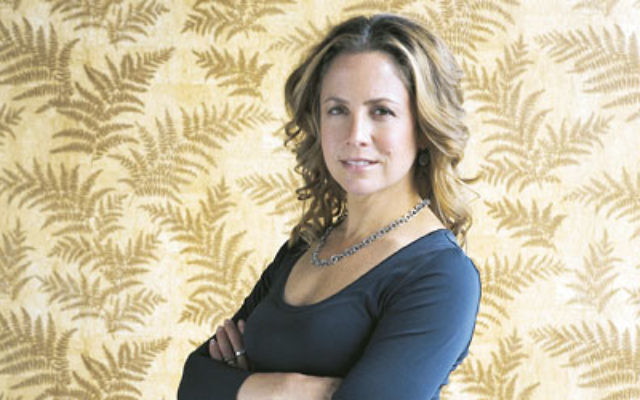Hidden story of the Goldfields
HISTORIAN and broadcaster Dr Clare Wright has written the women of Australia’s Eureka rebellion back into the historical record in a new book which was launched last month.
The first-generation Jewish Australian, who migrated from the United States as a five year old, sees herself as “outside the house” of conventional history, and hopes her book, The Forgotten Rebels of Eureka will restore women to their rightful place in the Eureka story.
“I want to make Australia’s foundation legends more socially inclusive, and that means occasionally going against the grain and writing about the women who were so much a part of the story of Eureka,” she tells The AJN.
“And in the process, I hope that members of the Jewish community will come forward with their own stories.”
The discovery of gold in Victoria in 1851 triggered a massive influx of fortune seekers from as far afield as Ireland, Scotland, the United States and China – including a sizeable number of Jews.
Many of the arrivals had been destitute in their own country, explains Wright. “Today we would call them economic refugees.”
Many Jewish newcomers trekked to the Ballarat goldfields from Melbourne as hawkers and storekeepers, and some became involved in Australia’s only armed rebellion, the Eureka revolt, in 1854.
Women played a prominent role on the goldfields and some of the arrivals were Jewish.
“There were many Jewish women on the goldfields. Women became milliners, dressmakers and shopkeepers,” she says.
Wright tells the story of Annie Silberberg, born in Poland in 1836 and educated in Paris. She arrived in Victoria in 1853 with her parents Golda and Jacques and four siblings. She married Lewis Hollander at Melbourne’s Stephen Street synagogue in 1860 and went to the Ballarat goldfields and bore 16 children.
Rebecca Abrahams married Polish-born Alfred Isaacs in London in 1853 and the couple set out for Australia the next year. Her first son, Isaac, became Australia’s first Jewish governor-general. In 1859, the Isaacs moved to Yackandandah and Beechworth, gold towns of Victoria’s north-east.
Ada Belinfante bore her husband Solomon 12 children. Solomon began his time in the colony as a garment trader but later became a prosperous commercial broker.
By the mid-1850s, disillusionment was setting in on the Ballarat diggings. Frustrated at the exhaustion of alluvial gold, the poorer prospectors resented the miner’s licence and saw it as a poll tax levied on all miners regardless of how much gold, if any, they were able to find.
Wright says it fell to the women of the goldfields to make ends meet when miners struggled to pay the levy or were imprisoned for failing to pay. Keeping food on the table was made harder with skyrocketing prices of goods carted up from Melbourne on muddy roads in the winter months.
Jews, like other communities at the diggings, kept their traditions, and a weekly Shabbat minyan – the nascent Ballarat Hebrew Congregation – took place at the Clarendon Hotel.
Many Jews were also masons and their masonic connections helped introduce them to the social tapestry of the goldfields, says Wright.
The diggers’ cynicism at injustices on the goldfields deepened when miner James Scobie was murdered after a drunken row at the Eureka Hotel. The hotel’s proprietor, James Bentley, the prime suspect, was acquitted by a local magistrate, triggering accusations of judicial corruption.
An angry mob torched the landmark hostelry, and Bentley’s pregnant wife Catherine, who had also been on trial for Scobie’s murder, was thrown from the burning building into the waiting arms of rescuers.
Manastra Flatow, a German Jew, found himself among 10 miners arrested, but while most were later released, including Flatow, three were randomly tried and jailed.
Outraged locals set up the Ballarat Reform League, but its charter – calling for fairer taxation and representation alongside the landed gentry in Victoria’s parliament – was ignored by Governor Charles Hotham, who also rejected women’s pleas for clemency for their jailed husbands, says Wright.
Most of the miners saw themselves as apolitical and loyal to the British Crown of their Victorian homeland, or – if they were newcomers – to their host colony, but with grievances against taxation, she explains.
However, some Americans wanted to introduce republicanism, while there were Europeans with fresh memories of the 1848 revolutions.
On November 29, 1854, miners gathered to burn their hated licences and to raise the Southern Cross flag under the leadership of Irishman Peter Lalor. Seconding his nomination was Edward Thonen, another German Jew.
The next two days saw further rioting, arrests and shootings, culminating in the building of the famous stockade, behind which some 1000 miners barricaded themselves.
The barricade was stormed by troops and police in a raid in the early hours of December 3. The storming of the stockade led to the deaths of at least 30 people – mainly miners and their families – as well as four troopers.
The following year, 13 miners were tried for treason but acquitted.
Wright is no stranger to highlighting the role of women in Australian history. She has also written Beyond The Ladies’ Lounge, a probing look at Australia’s female publicans, and has presented ABC-TV’s Utopia Girls, about how Australian women fought for their political rights.
In researching for The Forgotten Rebels of Eureka, Wright consulted the published writings of Australian historians, including Geoffrey Blainey, Dr Geoffrey Serle and John Moloney, but it was the primary sources that provided the best nuggets of information on the women of the goldfields.
“Introducing the story of the women isn’t a case of being politically correct, but of being historically authentic.”
The Forgotten Rebels of Eureka is published by Text Publishing. $45 (rrp)
REPORT by Peter Kohn
PHOTO of author Dr Clare Wright.


comments